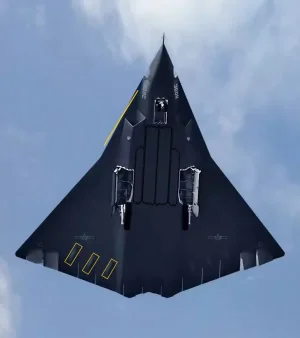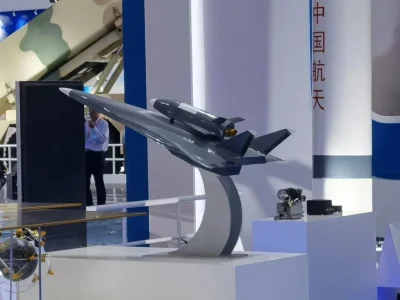China reportedly navalized the GJ-11. Right after the launch of the new LHD.
View attachment 19875
View attachment 19876
The 076 is ready for this:

China reportedly navalized the GJ-11. Right after the launch of the new LHD.
View attachment 19875
View attachment 19876

New tech and features used by new fighter, made by some military magazine.
View attachment 19979
View attachment 19980
View attachment 19981
View attachment 19982

Three identical, so no 3rd ramjet, adaptive cycle, APU or anything...but more in line with my earliest guesstimation
Also someone said morphing control surfaces, morphing is bit different in aeronautics where it means a wing or surface that can change its aerodynamic properties by changing its surface WITHOUT USING ANY MOVING PARTS LIKE FLAPS OR SLATS.To match similar level of thrust they're using perhaps three WS-10s.



4 PL-17 in center bays ok but 3 PL-15E each in outer bays? They might be too narrow. Do you have any scaled drawing estimation for your family of AAMs & J-36 like following?
View attachment 20146




The latest version of PL15E on Zhuhai Air Show
View attachment 20150View attachment 20151View attachment 20152View attachment 20153
Yes i noticed that but if we can have a scaled estimation then it would be more convincing.
One of the Chinese photo i shared above with blue background shows only 2 AAMs.
Total 10 AAMs, all in parallel even with folding fins & after staggering them doesn't look to fit.
EDIT/ADD: The MLG (Main Landing Gear) bay is also BIG which rules out SWB (Side Weapons Bay) for big missiles.






Official still didn't give any info, fans tried to find clues from GJ-11
View attachment 20163View attachment 20164View attachment 20165View attachment 20166View attachment 20167View attachment 20168
